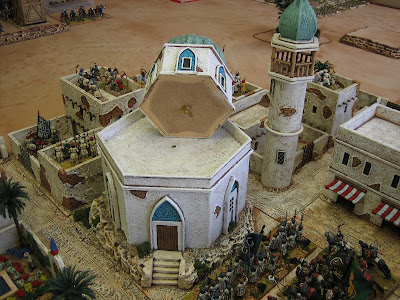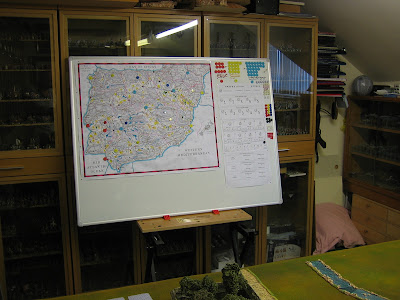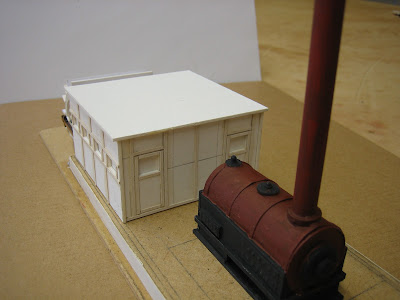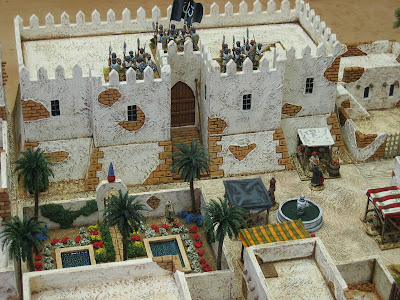In what feels like a new era, I decided to put on a Crusades game using To the Strongest (with some house amendments). Partly this was to get some new stuff on the table. Some new units and some new terrain.
On the new terrain front, this game will centre on a large Saracen town being assaulted by the Franks. Since last reporting on building progress I've added two or three general town sections and 'grand mosque'.
On the Saracen side (Mark D.), only the towns garrison started deployed (by myself, the game umpire); the Saracen relieving forces would start to arrive on the flanks from move one.Prior to the arrival of the players I also deployed the central command of the Franks for Graham H. The flanking commands would be deployed by Graham before turn 1.
The rest of the Franks: A small command of Religious Order (Hospitallers) and a much larger Armenian force.
The Saracen relieving forces. A Seljuk command with two deep 30+ figure units of Mutatawia infantry (one of them new). A Turcoman command. Before Graham deployed his flanking Frank forces, Mark chose which Saracen force would arrive on which flank (the black/red aces correspond to cards at each flanking road entrance).
Two new units of Adhath glaivemen formed part of the town's garrison. The glaives were made out of heavy white metal spears: the heads flattened, trimmed with clippers and filed; the spear heads on the figures were cut off at the top hand then the hand was drilled to take the glaive head.
Among the Franks are two new small units of dismounted knights.
I also made a siege tower. This is basically MDF. Although I don't have a curtain wall for the town I decided to call the outer face of the town as such. The tower allows easier activation over it.
The grand mosque. It stands on a low rocky outcrop. I made the dome using card fins and a paper skin.
So troops can be put in/on it, I decided to make the upper tier removable.
Two of the new town sections.
These were made with removable wall pieces so that they have more versatility.
Graham deployed the Armenians to his left and the Order troops to his left - the advance begins.
It gets to the wall in impressive time. The drawbrideg on the tower is dropped (it has small brass hinges pinched from a small wooden box of disgustingly cheap liqueur chocolates I got for Christmas).
The Franks force their way into the town with ease.
Seljuks and the Bro's clash. Order troops are soooo good. The Saracens do not fair well in the initial exchanges. Note the depth of the Mutatawia units - this is three stands side by side.
And the Turcomans, led by their cavalry, have arrived. They shoot volley after volley to little (zero) effect.























































